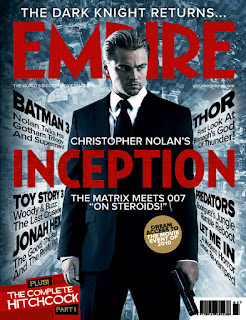I am going to be analysing different existing film magazines in terms of their contents, style and audience to help me when deciding an appropriate style of magazine for my film.
My research has shown that there are various types of film publications, suited for a wide range of audiences. Magazines are used to help promote upcoming films, though types of films being promoted often change depending on the type of magazine.
American Cinematographer is a monthly magazine published by the American Society of Cinematographers. it focuses on the art and craft of cinematography, it covers domestic and foreign feature productions, television productions, short films, music videos and commercials. It focuses mainly on interviews with cinematographers but directors and other film-makers are often featured as well.
Screen International is a multimedia magazine covering the international film business. it is published weekly, however the company also produces daily publications at film festivals. The magazine aims to primarily target those involved in the global movie business.
Fangoria is an internationally distributed US film fan magazine specialising in the genres of horror, slasher, splatter and exploitation films. its target audience is generally teenagers. Their online website allows for those who do not read print magazines to have access and remain relevant.
Filmmaker is a quarterly publication magazine covering issues relating to independent films. the magazine includes interviews, case studies, financing and distribution information, festival reports, technical and production updates, legal pointers and filmmakers discussing filmmaking in their own words.
Total Film is a UK-based film magazine published 13 times a year (every four weeks) by Future Publishing. The magazine offers cinema, DVD and Blu-ray news, reviews and features. It is the second biggest selling film magazine in Britain after Empire, and predominantly features Hollywood movies. The cover image is often of a globally recognised a-list star.
Empire is a British film magazine published monthly. It is the biggest selling film magazine in Britain and is also published in America, Australia, Turkey, Russia and Portugal. Empire organises the annual Empire Awards which are voted for by the readers of the magazine. If focuses mainly on mainstream Hollywood blockbusters and the cover typically features images of Hollywood stars or recognisable characters from franchise movies.
Sight and Sound is a British monthly film magazine published by the British Film Institute. the magazine reviews all film releases each month, including those with a limited release, which most film magazines don't do as they focus solely on films with a general release. The magazine features a full cast and crew credit list for each reviewed film.
Cinefex is a quarterly professional movie special effects magazine. It is one of the first magazines dedicated to special effects ever produced. it contains lengthy and detailed articles about special effects of a certain upcoming movie, made up mainly of various interviews with the people involved and couple with extensive behind-the-scenes photographs.
Entertainment Weekly is an American magazine that covers film, television, music, Broadway theatre, books and popular culture. The magazine features celebrities on the cover and addresses topics such as television ratings, movie grosses, production costs, concert ticket sales, ad budgets, and in-depth articles about scheduling, producers, show runners and more.
The Hollywood Reporter is a multi-platform American media brand focusing on the Hollywood motion picture industry, television and entertainment. The weekly print of the magazine includes profiles original photography and interviews with entertainment figures; articles about major upcoming releases and product launches; film reviews and much more.
Uncut is a monthly publication based in London, It focuses on music but also includes sections on films and books. A spin-off was launched in late 2005 and its attention was focused on DVD releases of classic movies. It is aimed as 25-45 year old men.
Hotdog was a film magazine first published in the UK in 2000-2006. It tended toward a cynical view of the film industry. It usually avoided jumping on the blockbuster bandwagon and frequently published pieces which appeared to be contrary to widespread opinion.
Starburst is a British Fiction Magazine that contains news, interviews, features and reviews of genre material in various media. The magazine is published monthly, with additional news and reviews being published daily on the website. The typical audience are men between 25-50.
Film Threat is a former print magazine and, now, webzine which focuses primarily on independent film, although it also reviews DVDs of mainstream films and Hollywood movies in theatres.
SFX is a British magazine covering the topics of science fiction and fantasy. SFX magazine is published every four weeks by Future plc and was founded in 1995. The magazine covers topics in the genres of popular science fiction, fantasy and horror, within the media of films, television, video games, comics and literature.
Little White Lies is an internationally-distributed movie magazine. It is known for its unique style of reinterpreting films through illustration, changing aesthetic and style with each issue to reflect the spirit of the cover film.
Shivers was a UK-based magazine that begun publication in 1992. It was dedicated to horror movies, television shows and literature. Its final issue was released in 2008.
Film Comment is an arts and culture magazine. Film comment features reviews and analysis of mainstream, art-house, and avant-grade filmmaking from around the world. The magazine's editorial team also hosts the annual Film Comment selects at Film Society of Lincoln Centre.
Premiere was an American and New York City-based film magazine, and ran between the years 1987-2010. It was released ten times a year. It sold all over the US, Canada, Australia, Britain and France among others.

































































